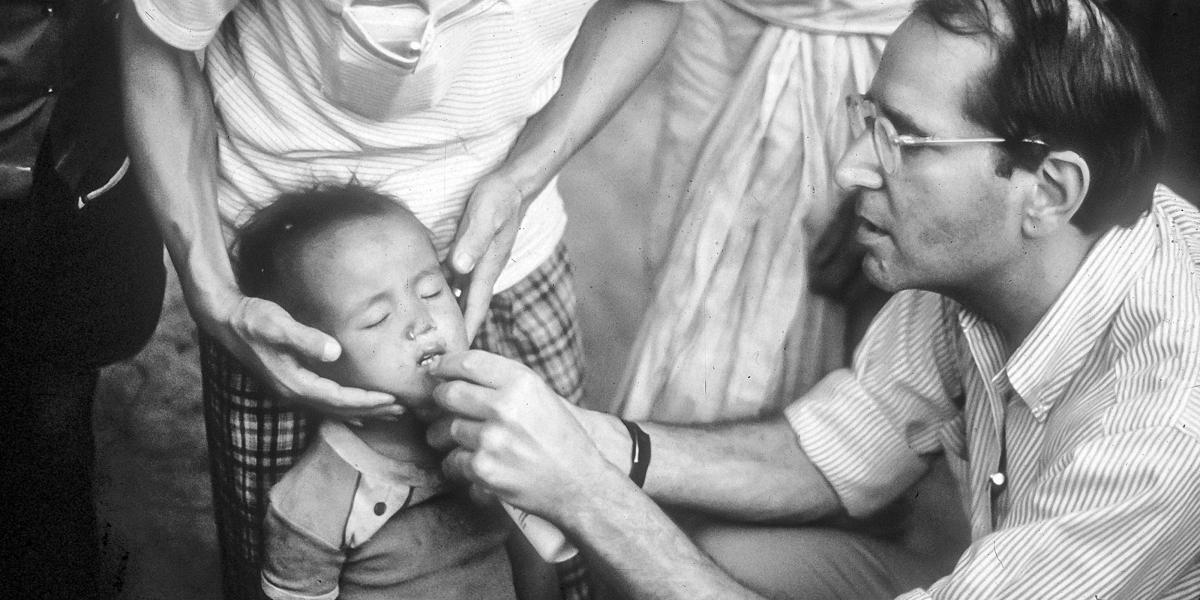JiVitA's Pioneering Patrimony
The JiVitA Project's patrimony is the pioneering Vitamin A research of Hopkins legend Alfred Sommer, MD, MHS '73, Bloomberg School dean emeritus. Beginning in Indonesia in 1976, Sommer (right) and collaborators conducted large community studies in Asia proving that even a mild vitamin A deficiency reduces childhood resistance to disease and increases pediatric death rates.
Other community- and hospital-based studies in Africa showed that giving vitamin A to children increases resistance to measles, diarrhea and other infectious diseases and could cut the deaths of children by 25 percent to 55 percent.
Keith West's Nepal study grew out of those findings. From 1994 to 1997, the Hopkins research team, including Joanne Katz, ScD '93, MS, and Christian, enlisted 20,000 pregnant women in southern Nepal to find out if vitamin A would reduce maternal deaths. The maternal mortality ratio there was 600/100,000 live births. (For comparison, in the U.S. the ratio per 100,000 births was 12, and in Canada, 6, based on WHO data for 1995.)
The team gave each woman in the Nepal study either a placebo or one of two weekly vitamin capsules. One contained vitamin A and the other beta-carotene, a form of vitamin A found in vegetables and fruits.The results were dramatic: Vitamin A cut maternal deaths by 40 percent and beta-carotene by 49 percent. This was the first study to show that vitamin A could yield such marked reductions in maternal mortality.
Because rates of maternal mortality and malnutrition in Bangladesh were thought to be similar to those in Nepal, the next step was to set up a trial to test whether vitamin A could also save lives in Bangladesh. "That was an obvious one," said West. He laughs, adding, "It didn't work. "In Bangladesh, neither vitamin A nor beta-carotene reduced maternal deaths.
Why not? "By all indications," says West, "health and nutrition of young mothers, and the minimal care available to them, began to improve around the turn of the last decade, when the JiVitA trial was getting under way." Life in Bangladesh was changing rapidly. "We can point to roads that were barely passable in 2001 that are now paved. They bring access to a whole range of services and assets, including health care. It doesn't have to be great health care to reduce maternal mortality."
By the end of the first JiVitA trial in 2006, death rates were less than a third of what had been expected. As Christian explains, "If you have a very low baseline of mortality, then it is unlikely that the remaining causes of mortality can be influenced by an intervention such as vitamin A."
While the results of the maternal vitamin A trial were disappointing, the success of the concurrent trial of vitamin A for infants suggests an inexpensive strategy for saving the lives of babies. The 15 percent decline in infant deaths in Jivitaland confirmed similar outcomes in trials in India and Indonesia. Pooled analysis of the three studies suggested that newborn vitamin A could reduce infant deaths in rural Asia by 20 percent.
Nutritionists aren’t sure of the exact mechanisms for the protective effect of vitamin A, but they do know that A is critical for newborn lung development and that it enhances immunity. Researchers predicted that in Bangladesh alone, if 70 percent of vulnerable infants got a single two-cent dose, vitamin A could avert the deaths of nearly 24,000 babies each year.
